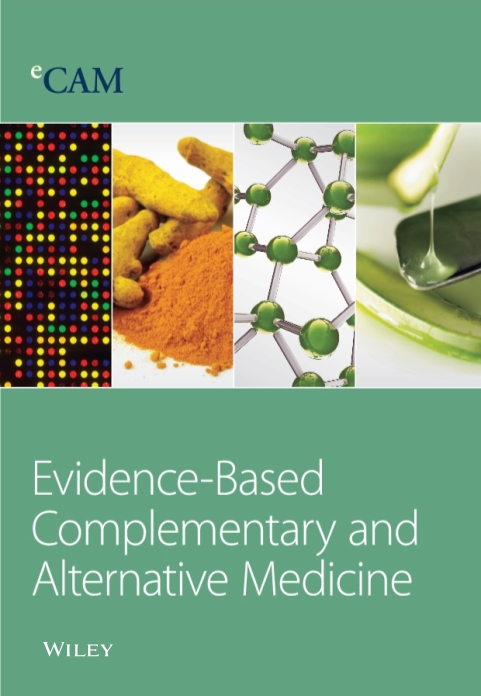The Meaning of Plants’ Names: A New Discovering Approach to Its Medicinal and/or Toxic Properties
4区 医学
Q2 Medicine
Evidence-based Complementary and Alternative Medicine
Pub Date : 2024-02-19
DOI:10.1155/2024/6678557
引用次数: 0
Abstract
Some of the vernacular or scientific names are related to possible medicinal and/or toxic properties that can reveal the presence of potential bioactive agents, contributing to the discovery of new drugs and/or knowledge of the risks associated with their use. This study sought to list the scientific and vernacular names of plants whose lexicons are related to those possible properties of plants and to compare them with the “ethno” (ethnobotanical and ethnopharmacological) and pharmacological data available in the scientific literature. A floating reading of the two classical and reference works on Brazilian medicinal plants was performed, and plants with vernacular and/or scientific names related to the possible medicinal and/or toxic properties were listed. Correlations between the meanings of the species’ names (lexicon) and their possible biological properties were made from their translation from Latin by consulting dictionaries. A bibliographic survey was conducted on the “ethno” and pharmacological data for each species. Finally, data from these three dimensions (lexicon, “ethno,” and pharmacology) were classified and compared using a bioprospection classification. It resulted in a list of 90 plant species belonging to 47 families. 66 of the 90 species presented “ethno” data from the scientific literature, while 46 species presented pharmacological data. Of these, 46 (69.7%) and 27 (58.7%), respectively, showed equivalence with the possible medicinal and/or toxic properties of plants according to their lexicons. According to this study, half of the plants investigated demonstrate equivalence in the three dimensions analyzed (lexicons, “ethno,” and pharmacological data from the scientific literature). Gastrointestinal and nervous system categories are among the most common in all three dimensions. Plant lexicons may be closely linked to the possible medicinal and/or toxic properties and the study of plant lexicons may represent one more approach for the search for new drugs, mainly considering the gastrointestinal, nervous, and parasites categories.植物名称的含义:发现植物药用和/或毒性的新方法
有些方言或科学名称与可能的药用和/或毒性有关,可以揭示潜在生物活性物质的存在,有助于发现新药物和/或了解使用这些药物的相关风险。本研究试图列出其词典与植物可能具有的这些特性有关的植物的科学名称和方言名称,并将它们与科学文献中的 "民族"(民族植物学和民族药理学)和药理学数据进行比较。对两本关于巴西药用植物的经典参考书进行了浮读,列出了与可能的药用和/或毒性有关的植物的方言和/或科学名称。通过查阅字典,将物种名称的含义(词典)与其可能具有的生物特性与拉丁文翻译联系起来。对每个物种的 "民族 "和药理数据进行了文献调查。最后,利用生物研究分类法对这三个方面(词典、"民族学 "和药理学)的数据进行了分类和比较。最终得出了一份隶属于 47 个科的 90 个植物物种清单。在这 90 个物种中,66 个物种提供了科学文献中的 "民族 "数据,46 个物种提供了药理学数据。其中,分别有 46 种(69.7%)和 27 种(58.7%)根据其词典显示了植物可能具有的药用和/或毒性特性。根据这项研究,在所分析的三个方面(词典、"民族 "和科学文献中的药理数据)中,有一半的调查植物显示出等效性。在所有三个维度中,胃肠道和神经系统类别最为常见。植物词典可能与可能的药用和/或毒性特性密切相关,研究植物词典可能是寻找新药的另一种方法,主要考虑胃肠道、神经和寄生虫类别。
本文章由计算机程序翻译,如有差异,请以英文原文为准。
求助全文
约1分钟内获得全文
求助全文
来源期刊
自引率
0.00%
发文量
1983
审稿时长
2.2 months
期刊介绍:
Evidence-Based Complementary and Alternative Medicine (eCAM) is an international, peer-reviewed journal that seeks to understand the sources and to encourage rigorous research in this new, yet ancient world of complementary and alternative medicine.
The journal seeks to apply scientific rigor to the study of complementary and alternative medicine (CAM) modalities, particularly traditional Asian healing systems. eCAM emphasizes health outcome, while documenting biological mechanisms of action. The journal is devoted to the advancement of science in the field of basic research, clinical studies, methodology or scientific theory in diverse areas of Biomedical Sciences. The journal does not consider articles on homeopathy.

 求助内容:
求助内容: 应助结果提醒方式:
应助结果提醒方式:


